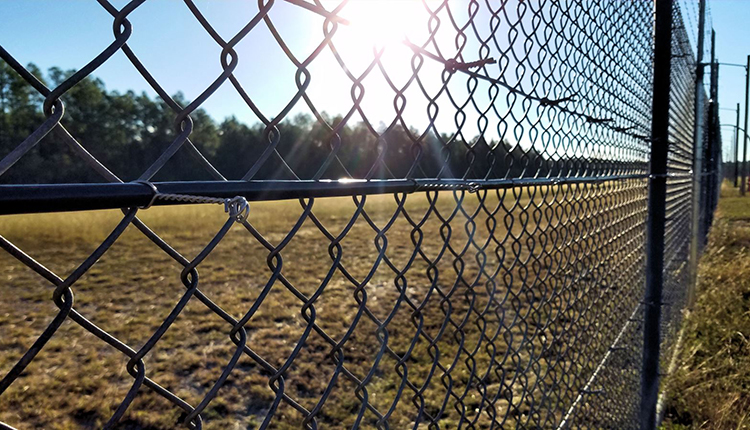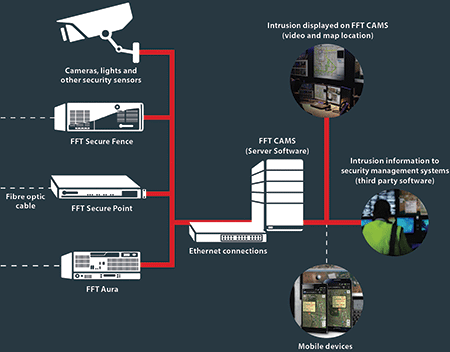Why a Fiber Optic Security System Enhances Your Property’s Protection and Surveillance
Why a Fiber Optic Security System Enhances Your Property’s Protection and Surveillance
Blog Article
The Ultimate Overview to Fiber Optic Safety And Security Equipments for Your Business
In an age where safety concerns are vital for businesses, recognizing the complexities of fiber optic innovation can be transformative. This overview details exactly how integrating fiber optic security systems not just boosts data protection however likewise supplies benefits like resistance to interference and real-time surveillance abilities.
Recognizing Fiber Optic Technology

The core of a fiber optic cable consists of a thin glass or plastic center, surrounded by a cladding layer that mirrors light back into the core. Single-mode fibers are made for long-distance transmission, while multi-mode fibers are suitable for much shorter distances, commonly used within buildings.
Optical fiber are not only much faster however additionally extra safe than standard wiring. Their integral resistance to electro-magnetic disturbance and the difficulty of touching into the signal without discovery make them a favored choice for businesses focusing on data honesty and protection. As companies significantly count on safe and efficient communication systems, understanding fiber optic innovation becomes essential for informed decision-making.
Secret Benefits of Fiber Optic Safety
When considering protection alternatives for a service, the benefits of fiber optic systems are particularly engaging. Primarily, fiber optic technology offers exceptional data transmission speeds and data transfer capability, making it excellent for taking care of high-resolution video feeds from surveillance electronic cameras. This capacity makes sure that safety and security personnel get real-time information, improving overall feedback times to potential security hazards.
Additionally, fiber optic cable televisions are naturally immune to electro-magnetic interference, which can jeopardize the honesty of standard copper-based systems. This resistance guarantees that the data transferred stays safe and undisturbed, giving a much more trusted security framework. Additionally, fiber optics are much less at risk to physical damage, as they are made from glass instead of steel, minimizing maintenance costs and downtime.
One more substantial benefit is the enhanced scalability of fiber optic systems. As service needs advance, fiber networks can be easily increased to accommodate extra safety and security gadgets without substantial overhauls to the existing infrastructure. Fiber optic systems supply boosted cybersecurity features, including security abilities that shield delicate information from unauthorized gain access to. Collectively, these benefits make fiber optic safety and security systems a durable choice for organizations looking for to boost their security procedures.
Installment Refine and Considerations
Thinking about the intricacies included, the setup process of fiber optic safety systems needs cautious planning and execution. The initial step entails a thorough website analysis to determine ideal areas for cabling and tools. This analysis should consider environmental variables, existing infrastructure, and potential susceptabilities.

Additionally, the installation has to follow local building regulations and sector requirements. This may consist of collaborating with various stakeholders such as building supervisors, IT teams, and safety and security personnel to make sure seamless assimilation with existing systems.
Post-installation, extensive screening is necessary to verify system efficiency and determine any type of concerns that may arise. By focusing on these considerations during the setup process, organizations can make sure a robust and effective fiber optic safety system that meets their details safety and security needs.
Latest Developments in Fiber Optic Security
Current advancements in fiber optic modern technology have substantially improved the capabilities of safety systems for businesses. Among the most remarkable innovations is the integration of fiber optic sensors that can identify vibrations and invasions along the boundary of a facility. These sensing units offer real-time surveillance, enabling fast response to prospective violations.
Additionally, the development of distributed fiber optic picking up technology enables for the constant monitoring of big locations with a solitary fiber cable. This technique not just lowers installation prices but also enhances the integrity of checking systems by eliminating the requirement for several, different sensing units.
Furthermore, developments in multiplexing strategies have enabled companies to transfer large quantities of data over fiber optic networks, enhancing the capabilities of video security systems. High-def video clip feeds can currently be sent out over cross countries without loss of high quality, making certain that protection Read Full Report employees have accessibility to clear and actionable info.
Last but not least, using expert system (AI) combined with fiber optic systems is transforming hazard discovery. AI formulas can examine information from fiber optic networks to identify uncommon patterns or habits, enabling positive safety and security steps. These advancements jointly stand for a substantial leap ahead in fiber optic protection technology.
Picking the Right System for Your Organization
Choosing the suitable fiber optic security system for your organization is critical for making sure ideal protection and tranquility of mind. To make an educated option, assess your specific protection requirements, considering factors such as the size of your properties, the nature of your operations, and possible susceptabilities.
Begin by assessing the level of protection required; as an example, high-risk settings may necessitate sophisticated systems with integrated monitoring and invasion detection capabilities. Next, think about scalability; as your service grows, your security system should be qualified of broadening to accommodate increased needs without substantial overhauls.
Additionally, investigate the dependability and performance of various systems. Look for providers with well established credibilities and client testimonies that prove to their service quality. It's also recommended to ask about the modern technology's compatibility with existing framework, ensuring a seamless integration process.
Conclusion
In conclusion, fiber optic protection systems provide a durable option for boosting service security frameworks. The newest innovations better boost the effectiveness of these systems, making certain that companies remain protected and adaptable in an ever-evolving risk landscape.
Report this page